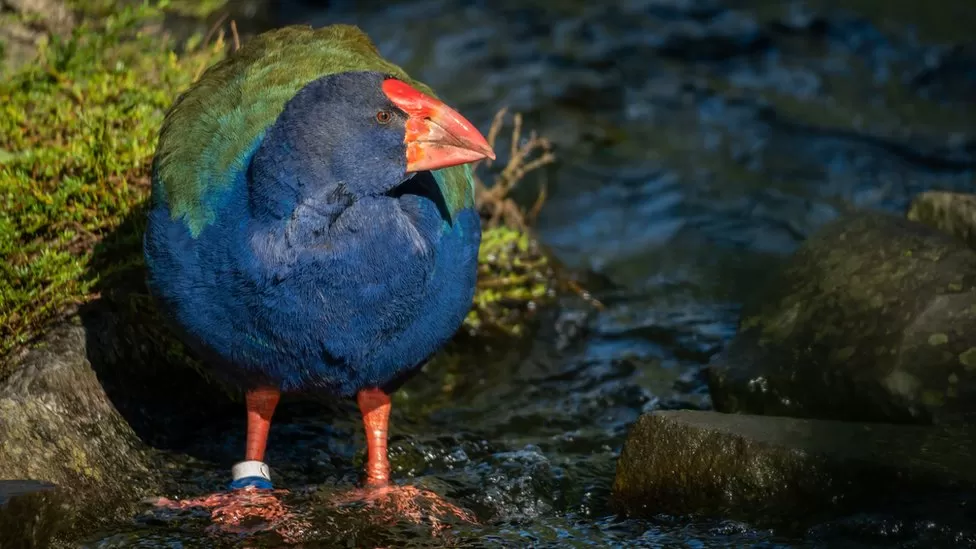Takahe facing extinction find new home in sanctuary

At Zealandia in Wellington, Waitaa and Bendigo sprinted out of their cages to cheers from the crowd.
Earlier this week, 18 takahe were released in South Island mountains in an effort to boost a small population.
Takahe were thought extinct at the end of the 19th Century due to predators, but a small number was discovered in 1948.
Conservation efforts have raised their population to close to 500 since their discovery in the Murchison Mountains on the South Island.
Takahes have a strong red beak, stout legs, and bright blue and green feathers. As large as a large hen, they can weigh up to 3kg (6.6lb). New Zealand’s Department of Conservation (Doc) says they are often mistaken for pukeko swamp hens that are thinner.
A takahe breeds only once a year, raising one to two chicks, and can live up to 18 years in the wild and 22 years in sanctuaries. Starchy leaves and seeds provide a high-fibre diet.
In the North Island’s Zealandia sanctuary, a predator-exclusion fence surrounds an existing pair of takahe, Waitaa and Bendigo.
Land predators introduced by human settlers prey on New Zealand’s native birds, which evolved before mammals. It was an attempt to establish a third wild population of the birds on South Island where they have a special cultural and spiritual significance that nine breeding-age pairs were released at Greenstone Station last week.
There are also wild populations in Fiordland’s Murchison Mountains and Kahurangi National Park, where takahe were released for the first time in 2018.
“After decades of working to increase the takahe population, it’s rewarding to now be establishing more wild populations, but they come with challenges,” said Doc’s Deidre Vercoe.
If we want the takahe to thrive, we need to explore new sites and learn as much as we can to protect the birds now and in the future.
As a taonga – a treasure that should be protected – the takahe is considered sacred by Mori.
Takahe’s predators – stoats, feral cats, ferrets and rats – have long been controlled by conservationists.
The most recent wildlife release at Greenstone Station was preceded by the installation of 45 ferret traps and 25 cat traps by conservationists.
The International Union for Conservation of Nature and Natural Resources classifies the South Island takahe as endangered or three steps from extinction. The North Island takahe has been declared extinct.
